
Rocky Mountain coal mine in Alberta takes next step to expansion
In Alberta, a massive open-pit coal mine near Jasper National Park is hoping to expand...
Elder Tutakwisnapšiƛ, whose English name is Joe Martin, grew up learning how to make canoes with his father, Chief Robert Martin Sr.
“When I was very young my dad did not leave me a choice to go or not,” recalls Joe, who grew up in the Tla-o-qui-aht village Opitsaht, a short boat ride from Tofino, B.C. “He said, ‘we’re going,’ not ‘do you wanna come?’ ”
Joe is from the House of Ewos of the Tla-o-qui-aht First Nation. He would go canoe carving with his father and, on one occasion, remembers being grumpy about it.
On one occasion, he says, “I was chopping away at this piece of wood and he gave me shit, and said ‘c’mon, don’t do it any old way. We’re Tla-o-qui-aht. You’re going to do a job — you do a good job.’ ”
Eventually, Joe would realize making canoes was his calling — but it took him a while to figure it out. He became a logger at 18 and worked in the industry for 12 years during the 1970s and 1980s.
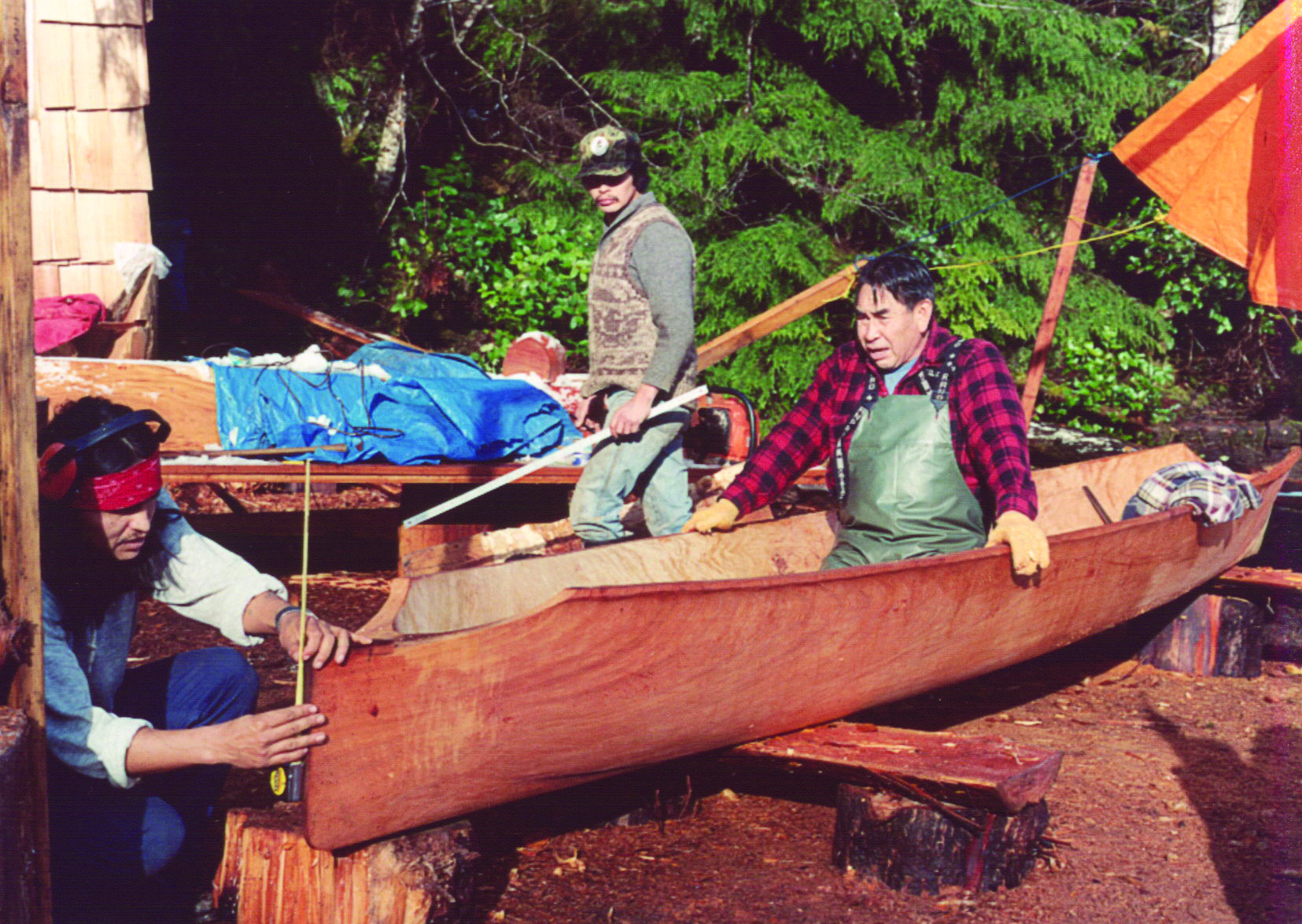
Joe says he was working in the Cypre River Valley near a meandering stream that fed into a river when his logging career came to an abrupt end. Logs lay on the bank, ready to be pulled away — one he says was 5.5 metres in diameter — or about as wide as the height of a giraffe. He saw there were little salmon in the stream, and the water was so muddy the fish were being smothered. He left some big logs on the other side of the stream because he didn’t want to drag them through the fish. Leaving the logs behind got him fired, he says.
But he felt “a huge weight” lifted off his shoulders, in part because his dad was not happy that he had begun working as a logger as a young man looking to make good money.
“My dad was a fisherman … I felt guilty. I felt really bad,” he says.
After leaving his job, Joe joined his father at a logging blockade on Meares Island in 1984 to protect old-growth forest — it was led by the Tla-o-qui-aht who were joined by Chief Earl Maquinna George and John Jacobson from Ahousaht First Nation and local conservationists, Joe remembers. This was the first logging blockade in Canadian history, and a precursor to the series of blockades in Clayoquot Sound known as the War in the Woods.
“I guess I became their worst enemy,” he says.
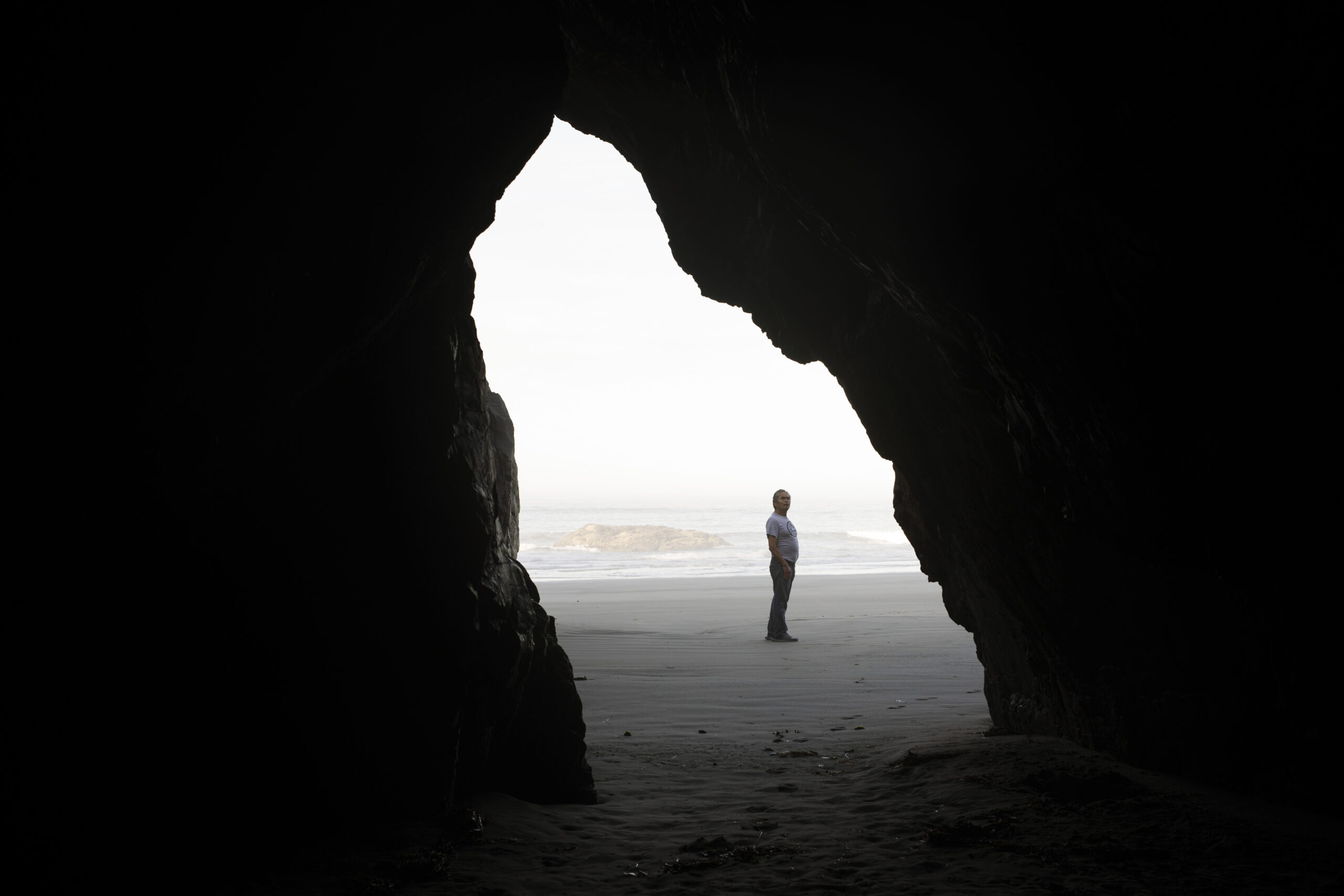
Since then, Joe has been an outspoken advocate for old-growth forests, served as councillor for Tla-o-qui-aht First Nation, carved over 60 canoes and taught many apprentices. Now, he wants to share the teachings and protocols he learned from his father and grandfather, Nuukmiis (George Martin), in a new way — by writing a book. It’s called Making a Chaputs: The Teachings and Responsibilities for a Canoe Maker and it’s co-authored with Alan Hoover, a former curator at the Royal BC Museum.
In the book, Joe reflects on how he stayed at the blockade in 1984 and carved three canoes with his father and his brothers, Bill Martin and Carl Martin. This was when Joe really got into canoe carving. He describes it as an act of sovereignty and a “demonstration of our peoples’ connection to the forest.”
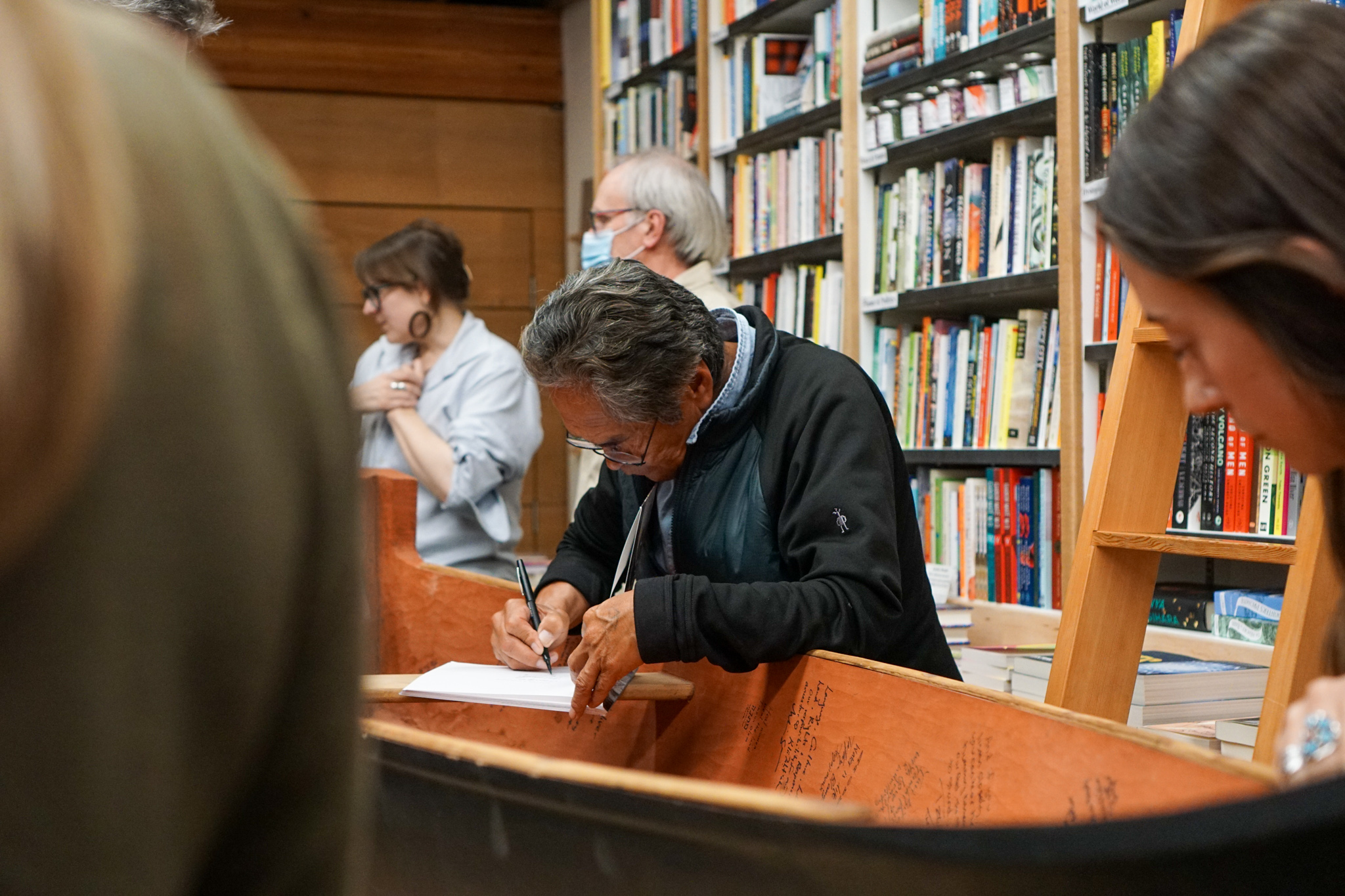
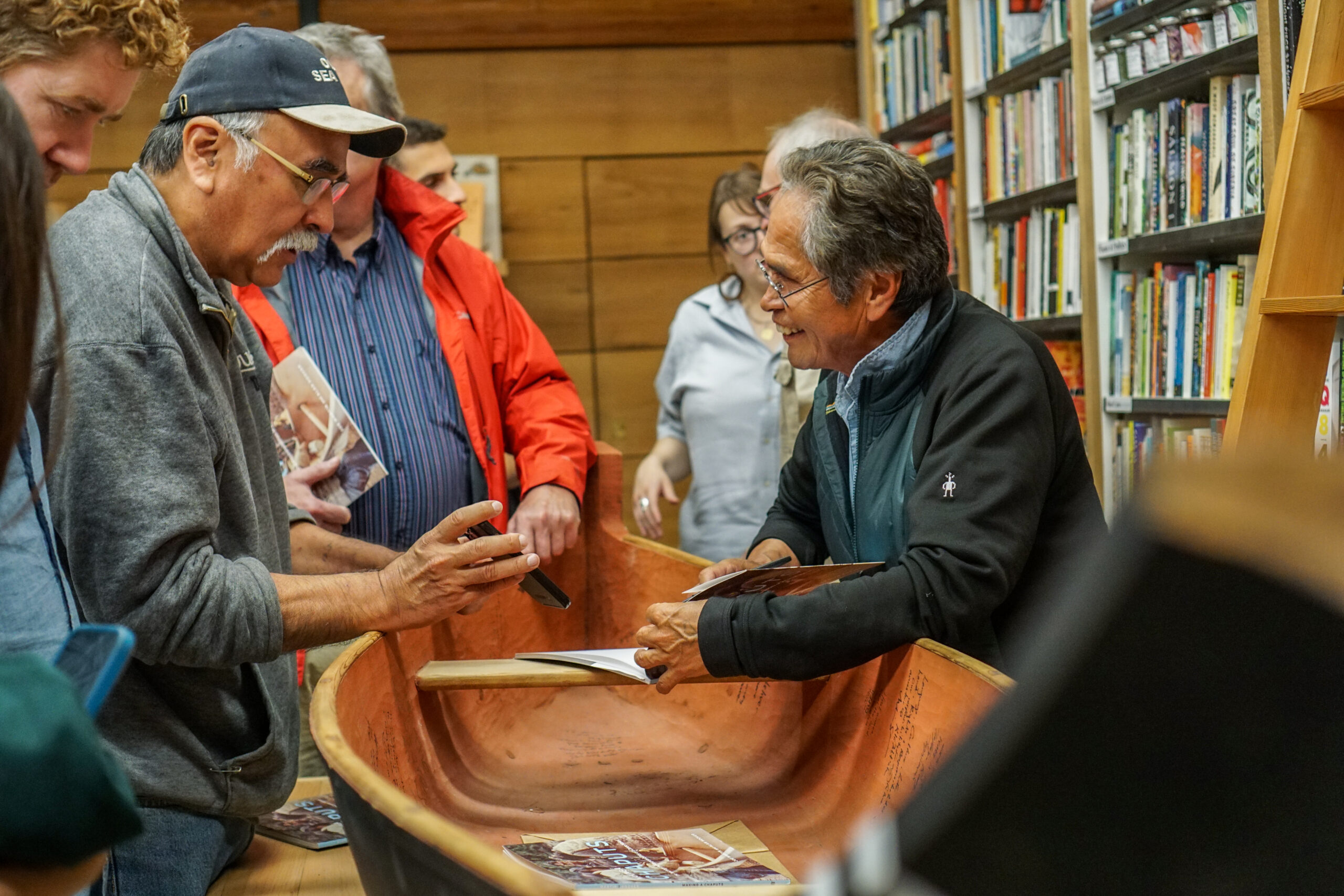
They built canoes “the old way,” he explains, using axes and adzes (a curved blade) at a cabin in C’is-a-qis (Helelboom Bay).
“The canoe represents to me all those resources that we as native people have a cultural right to,” he writes.
In Making a Chaputs, Joe describes how many parts of a tree are used in the canoe-carving process, including wooden wedges for splitting wood, spruce gum to act as glue and brushing a canoe with red cedar boughs in a blessing ceremony.

He explains how canoes are an “essential part of the culture,” and how the principles of creating a canoe are intertwined with the laws of respecting and stewarding a forest. In an interview before his book launch, he says he thinks about how knowledge moved up and down the coast through canoes.
“The canoes are a vector for traditional Nuu-chah-nulth values, laws and reciprocity to the land, water, air and fire which give us life,” he writes in his book.
Careful thought went into choosing a tree for a canoe — not only to find the best wood, but to make sure you wouldn’t destroy other creatures. He describes how they would only harvest in the fall and winter to avoid disturbing nesting birds, and would avoid disrupting wolf or bear dens — again prioritizing the health of the whole forest.
Joe connects the cultural importance of canoes with the principles of upholding a forest instead of destroying it. He points out that to make a canoe, one needs a large, straight old-growth tree, — the kind of tree that occurs in a forest that has been looked after for millenia by Indigenous Peoples.

Since Canada attempted to push Indigenous Peoples out of their stewardship roles, forests have “been totally mismanaged by the governments,” he says.
“They thought the ‘savages’ were just not using it. But we were actually taking care of it.”
This summer, The Narwhal met up with Joe near Kennedy Lake in Tla-o-qui-aht territory. He drove a truck along a logging road, through former clearcuts now filled with second-growth trees, talking about how the forest used to be. The canopy was filled with birds, and the rivers were alive with fish.
The fish in the streams provide food to animals like bears and eagles, who bring carcasses into the woods, bringing nutrients to the trees.
To create a canoe or a totem pole, you need salmon helping trees grow strong and healthy, he explained as he drove.
He stopped on a bridge looking over a river.
“This place used to have all kinds of fishing when I was younger. Oh my god, it was crazy. Now you don’t see one. You look at that, and it’s just quiet. Not one.”

Logging has more restrictions now, but back when Joe was working companies logged riparian areas along waterways, leading them to dry up or be too hot for salmon. Logging also contributes to erosion and landslides after trees that stabilize soil are removed, which can damage spawning habitat. Combined with overharvesting, fish farms and climate change, salmon in Clayoquot Sound have been struggling like other Pacific salmon.
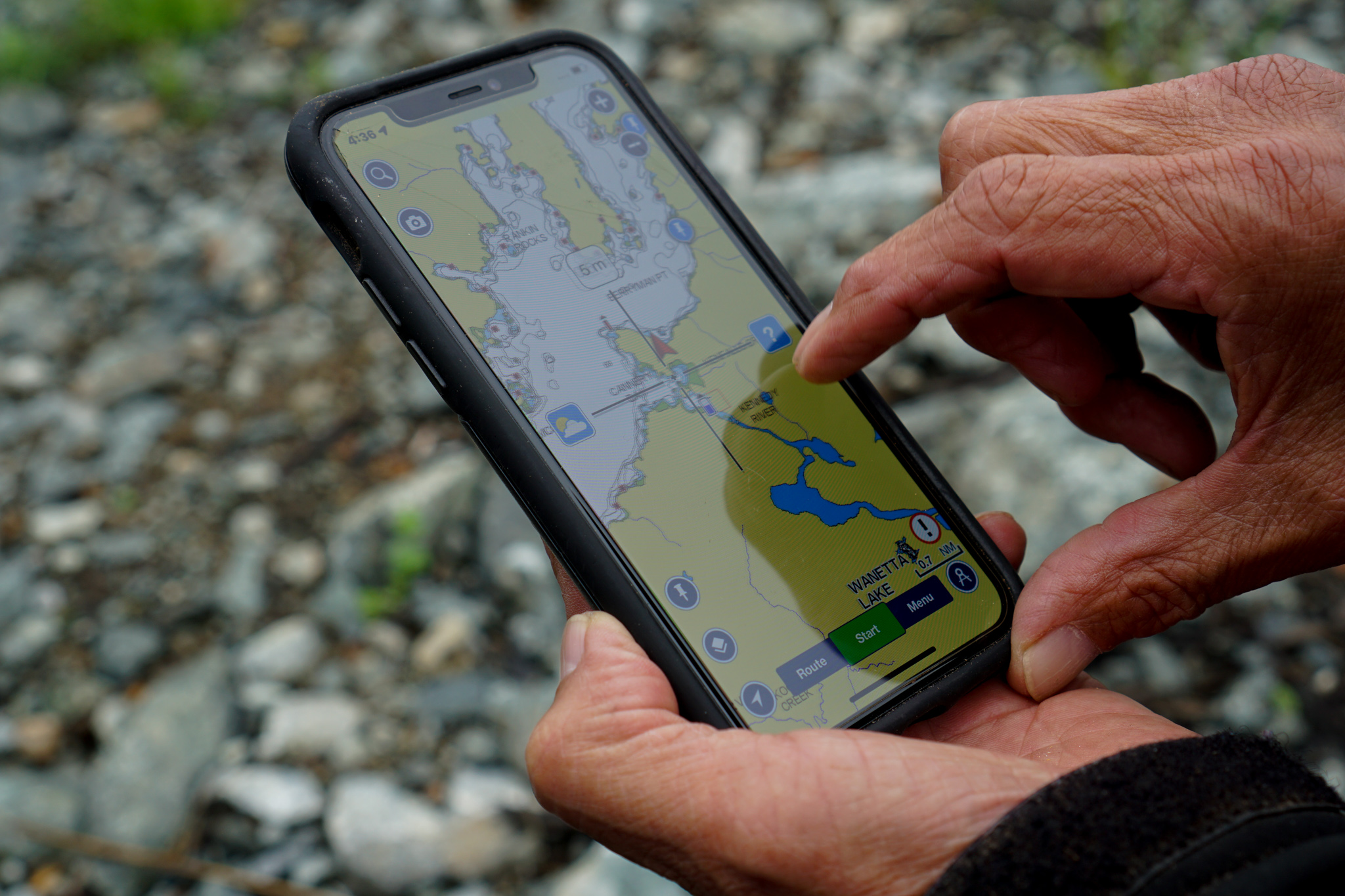
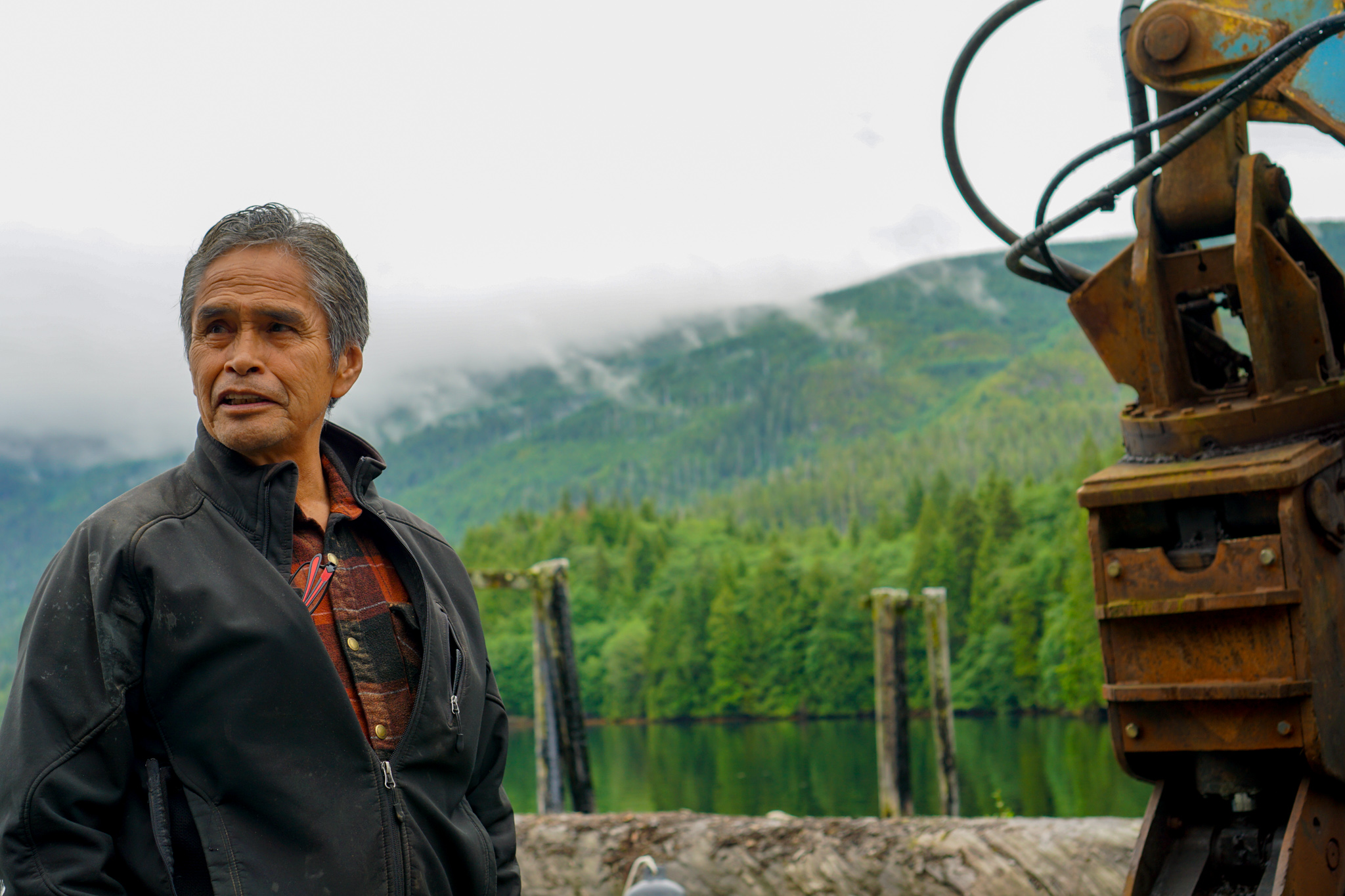
After Joe got his start in canoe carving at Meares Island back in 1984, the blockade triggered major changes for old-growth forests and Indigenous governance in Clayoquot Sound.
The Meares Island blockade led to the Tla-o-qui-aht establishing Wah-nuh-jus–Hilthoois (Meares Island) Tribal Park, and eventually declaring all of their territory to be tribal parks under their jurisdiction over the coming years.
The Tla-o-qui-aht and Ahousaht First Nations also successfully filed for an injunction to stop MacMillan Bloedel from logging on Meares Island in 1985. Joe says his father received the B.C. Court of Appeal documents at the island. After years of being pushed out of their role taking care of the territory, they had won a major victory.

From there, the five central Nuu-chah-nulth First Nations took control of all tree farm licenses in Clayoquot Sound. This created its own challenges, as the nations balanced a desire to log more sustainably while working within a licence system that pressured them to log.
Now, the Tla-o-qui-aht First Nation hopes to buy out all the stakeholders of the tree farm licenses to create an Indigenous Protected and Conserved Area.
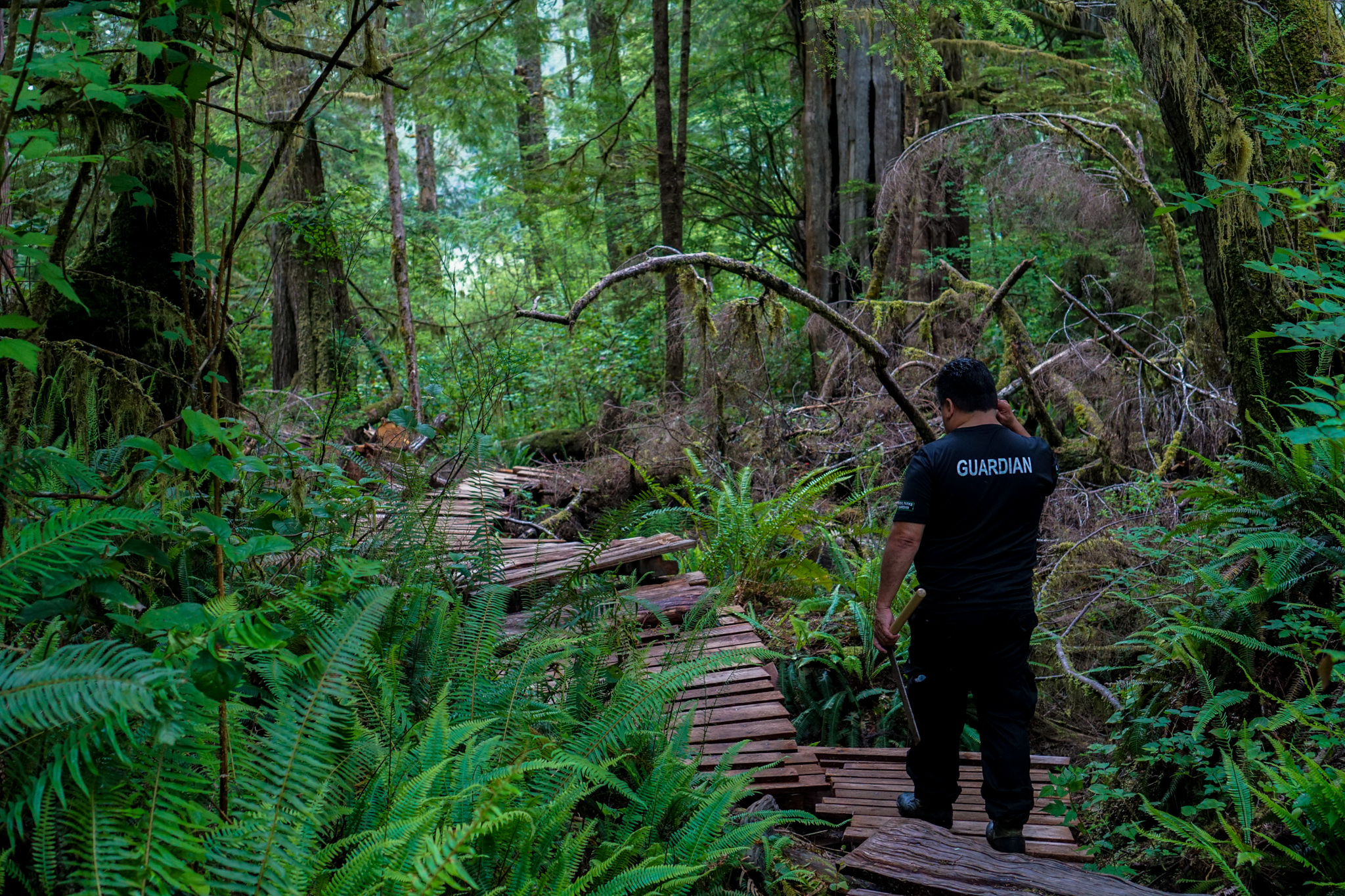
Only 26 per cent of original productive old-growth forests on Vancouver Island in the southwest Lower Mainland remain standing today, according to Ancient Forest Alliance. In November 2021, the B.C. government announced its intention to defer logging for two years in 2.6 million hectares of old-growth forest. It gave First Nations 30 days to respond whether they wanted to support the deferrals or to request more time to decide.
A recent report by Stand.earth found 700 hectares of old-growth forest was logged in four B.C. areas since the deferrals were announced. As of May 11, 2022, the province said deferrals had been implemented on 1.7 million hectares of old-growth forest.
Old-growth trees provide the best logs to create big canoes. Joe would typically use the centre of a log as the bottom of a canoe. Using the centre of a log makes a canoe the most stable in sunlight and less prone to cracking — but it requires the log to have a large diameter. If the log is smaller, he has to use the bottom of the log as the bottom of the canoe.
Joe has had to change his technique in creating canoes due to the lack of large old-growth logs available. He fears there won’t be enough big trees left for future generations to continue canoe and totem pole carving.

On that logging road this summer, Joe eventually reached the end. The road opened up to Kennedy Lake. An old rusty car and some logging equipment sat around, some looking new, some looking abandoned.
The lake was incredibly peaceful, reflecting a grey sky. It’s quiet compared to Tofino, which has the constant drone of seaplanes. Joe would carve canoes with his late brother Bill in the forest around this lake.
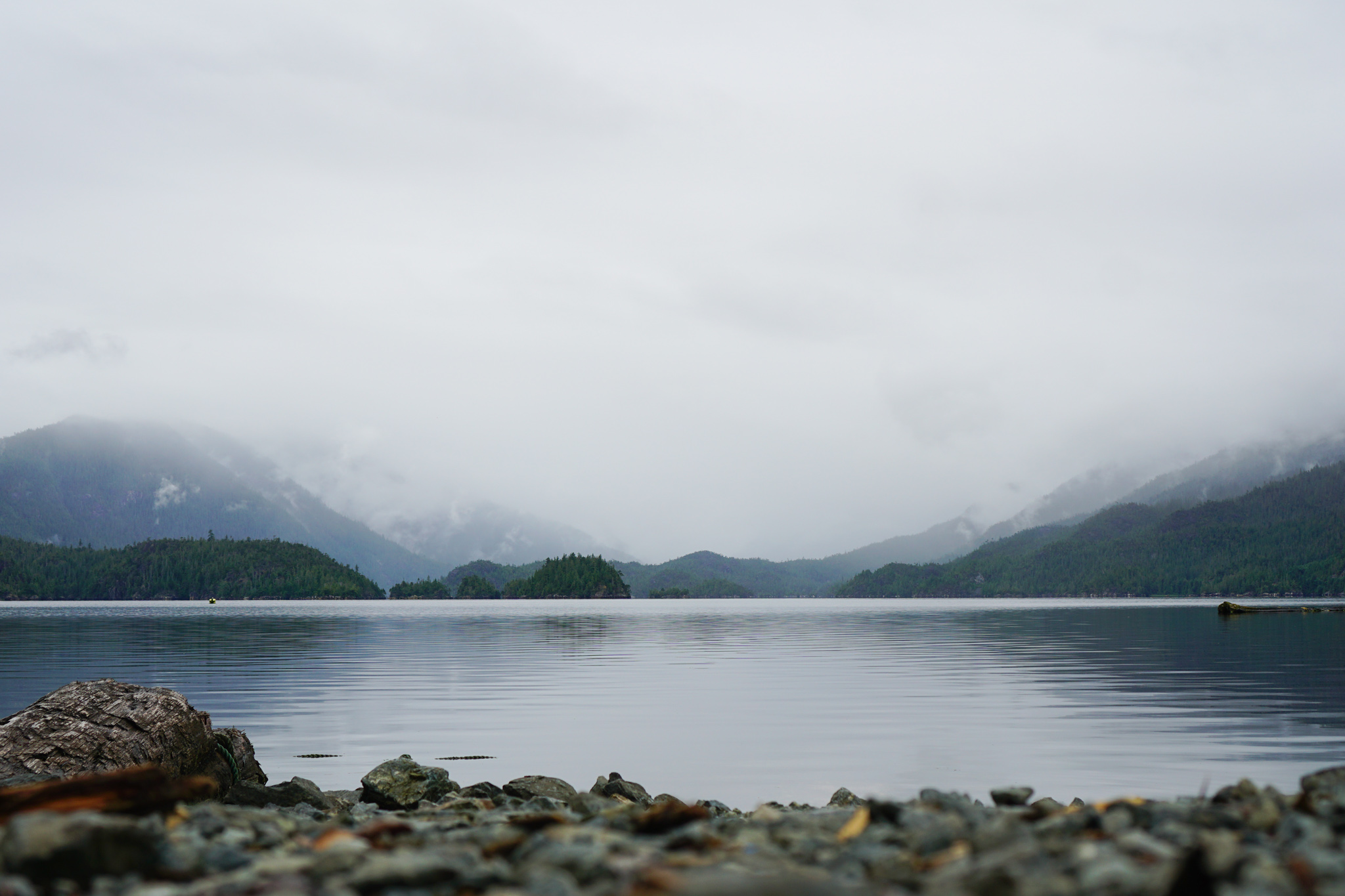
Joe is concerned about future generations’ access to old-growth logs for cultural use, especially since he sees its ability for healing among people dealing with trauma from residential schools and colonization.
“When people learn how to make a canoe, some are happier, happy with the accomplishment,” he says. One of the people he dedicates his book to is Bill, a residential school survivor. Bill died about ten years ago.
“I witnessed my late brother Bill as happiest while we were carving canoes in the forest at home in Tla-o-qui-aht Tribal Parks,” he writes.
Joe says the trauma of residential schools and the poverty Indigenous Peoples have experienced due to colonization means nations will often want to encourage industry to lift their people out of poverty — much like a teenage Joe, who was “tired of being broke” when he first entered logging.
“It’s a really complex story,” he says. “Not an easy one to contemplate.”
Joe says he sees a slow revitalization of Nuu-chah-nulth language and traditions. On Canada Day, the nation raised a totem pole carved by Joe and a team of carvers — the third standing in the village currently, and the first raised since 1993. Before colonization, each home used to have four totem poles in front of it, he says. His oldest brother Nuukmiis, Chief of the House of Ewos, commissioned the pole.
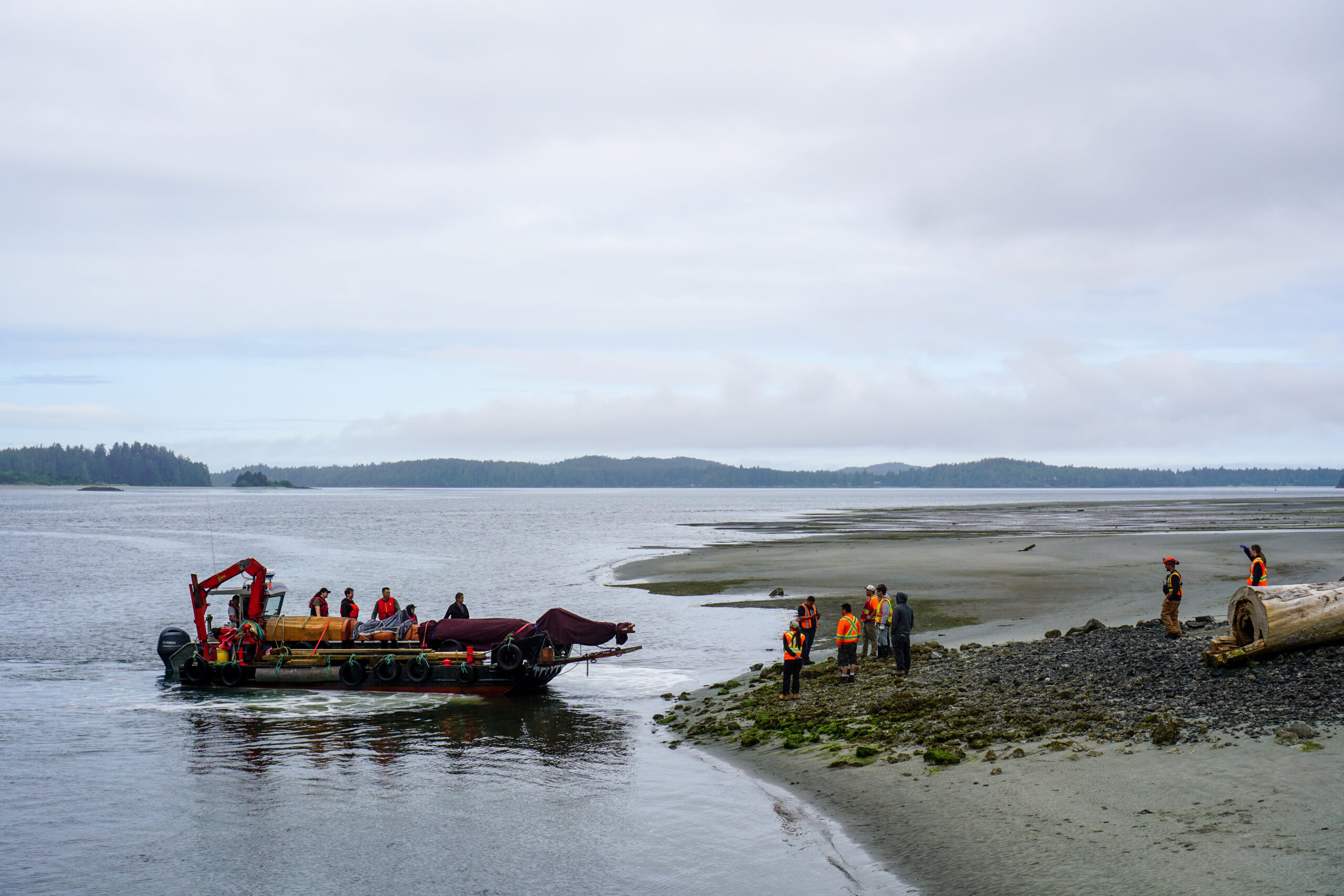
The top crest is a female thunderbird, which speaks to “our female ancestor [and] our connection to the supernatural,” he explains.
The totem pole also bears four skulls representing pandemics they have gone through. One skull represents COVID-19, another represents past pandemics like tuberculosis, another represents missing and murdered Indigenous Peoples and one represents residential schools and the children who never came home. He’s carving another pole that speaks to the future and our responsibility to children and nature, he says.
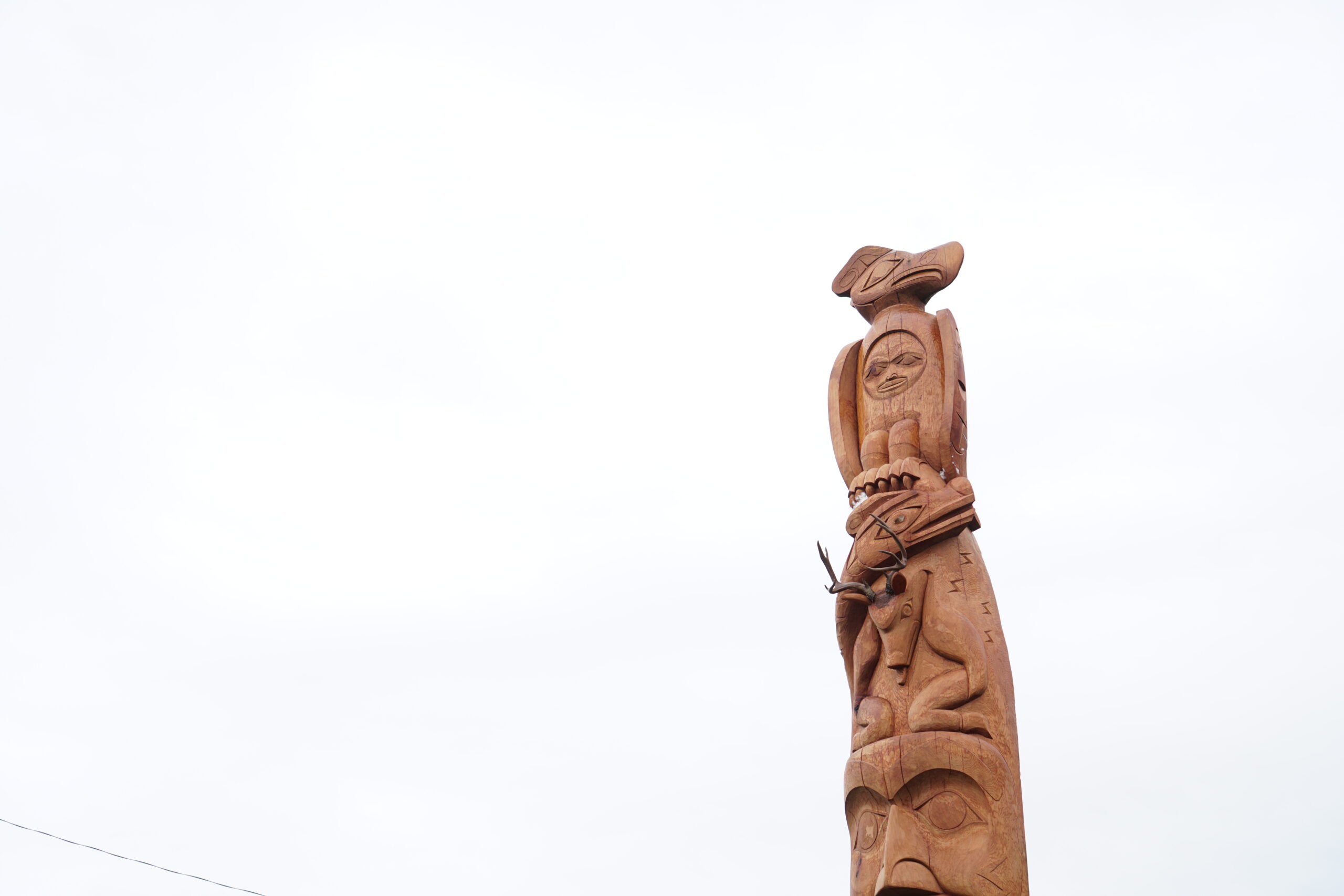
His canoes also speak to a future of reclamation and sovereignty. A canoe he carved for the Makah Nation carve was used for whale hunting. A canoe he carved for the Mowachaht/Muchalaht First Nation was used in a demonstration against Fisheries and Oceans Canada. He gifted a canoe to his two adult children, and they used it to lead cultural eco-tours for years. One small canoe he made is for children to play in on the beach. All these canoes are carrying knowledge forward along the coast, he says.
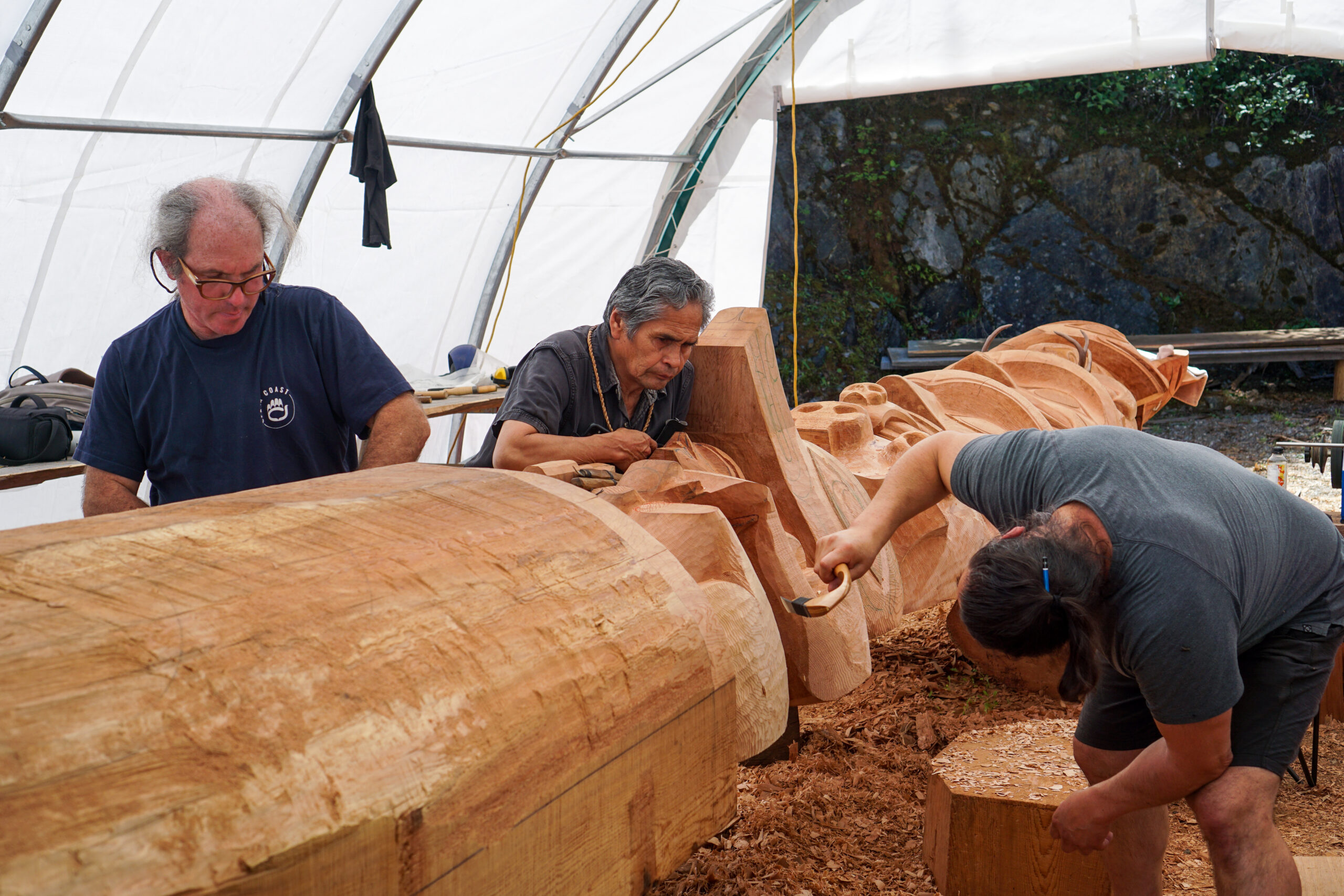

Joe is busy with family, carving and obligations as a councillor for the nation. But he regularly makes himself available for documentaries and interviews, and people familiar with logging on the West Coast likely know his name. He says he makes the time to explain these issues because of the pressure Indigenous communities still face from companies wanting to access natural resources.
“They want to keep taking and taking and taking,” he says. “Fattening up other bank accounts, not ours.”
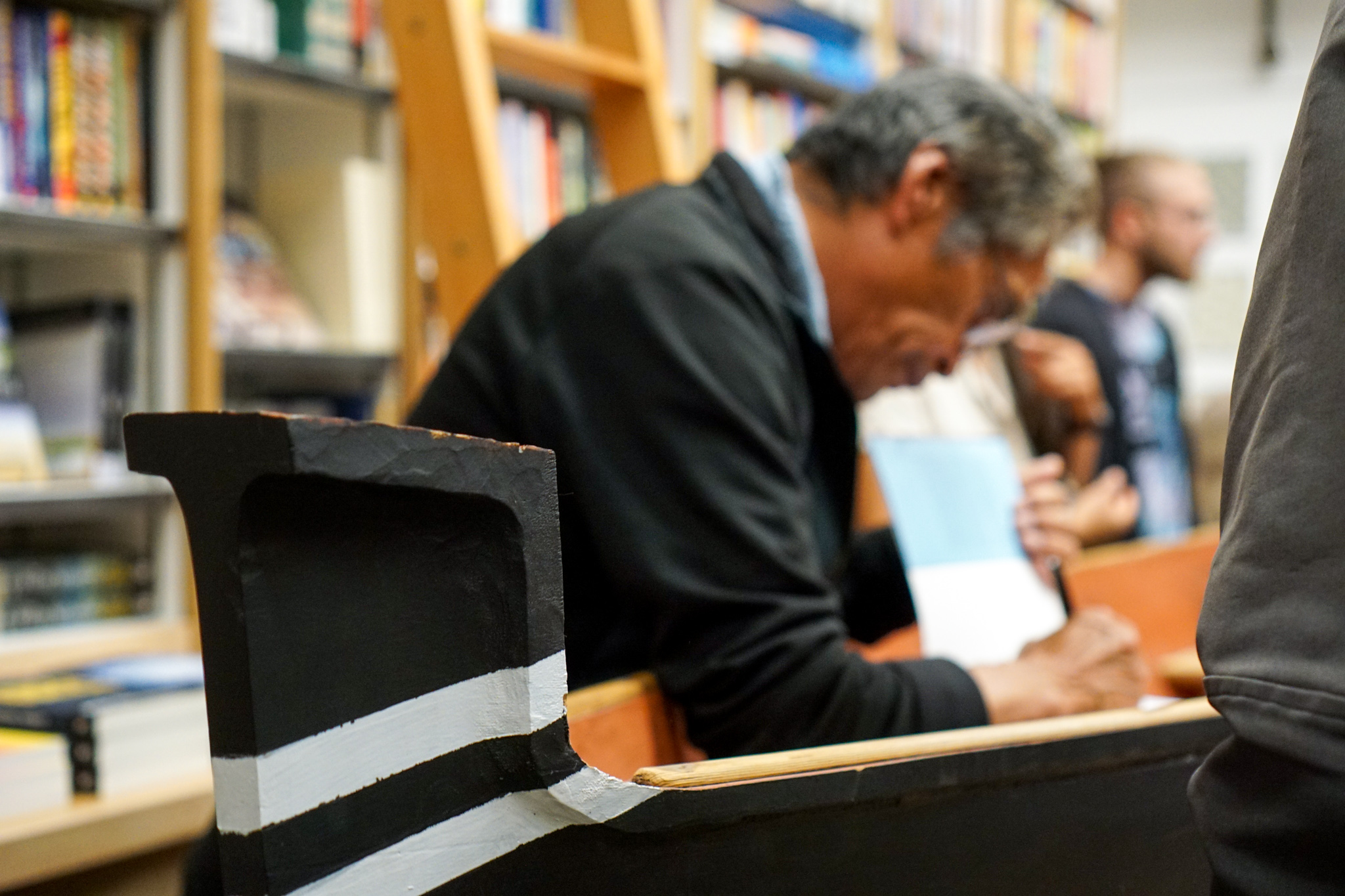
In the face of this “relentless” pressure, Joe says he wants to use his voice to emphasize “our responsibility to our future generations.”
And as for his book — he wants anyone interested in learning about canoe-making to have access to that knowledge.
“I don’t know how many more canoes I’ll be able to make. But I will teach as long as I can.”
Updated, on Oct. 15, 2022 at 4:49 p.m. PT: In previous version of this story a photo misidentified Joe’s brother Carl as his brother Bill. This has been corrected. The story was also updated to reflect the specific people from Ahousaht First Nation who Joe remembers being at Meares Island.
